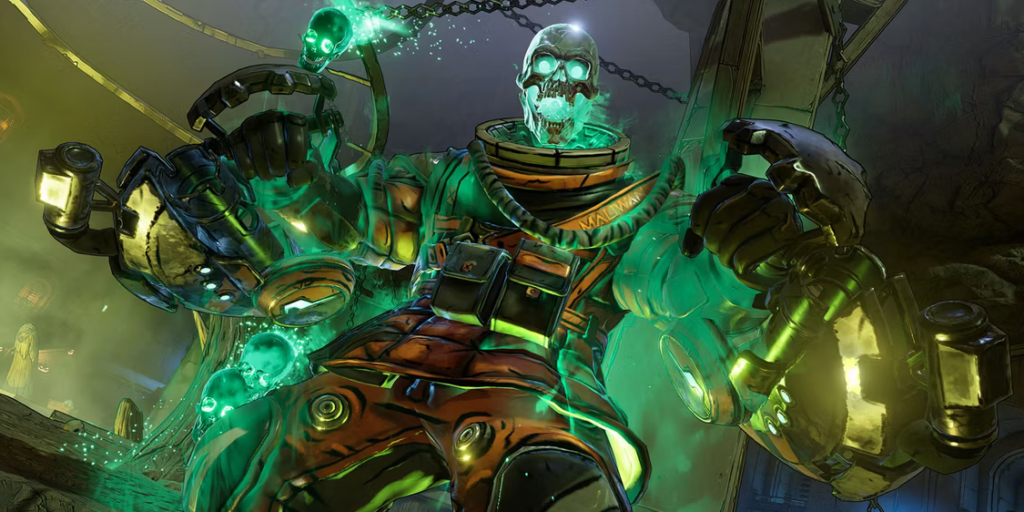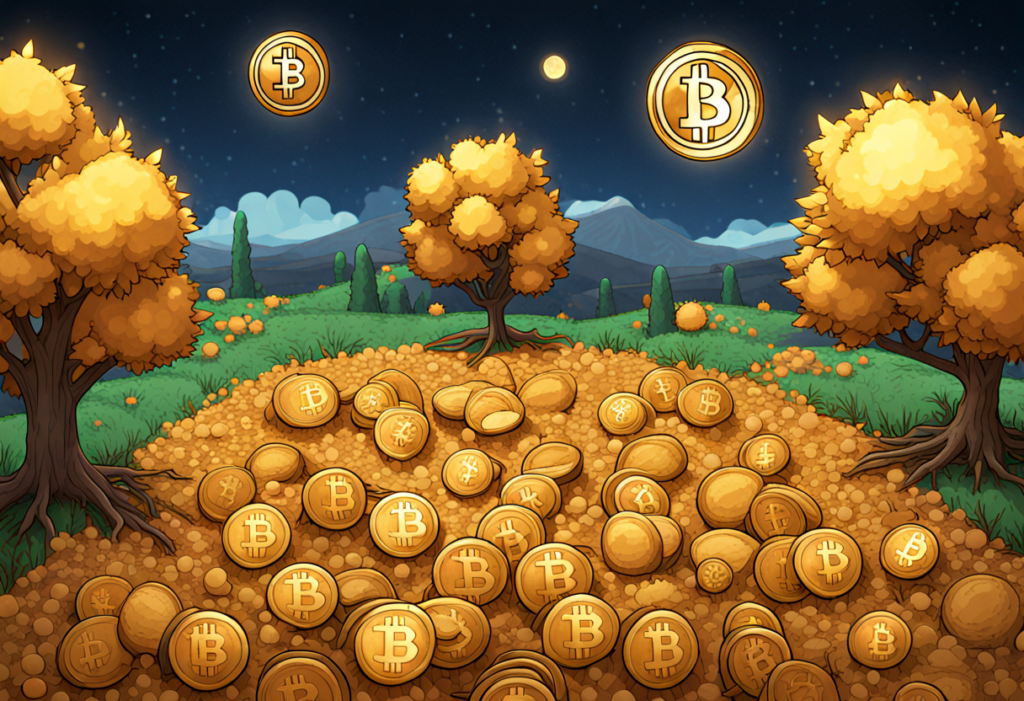
MintRocket was publicly announced as a sub-brand of Nexon in May 2022. A few months later, in October, the studio released Dave the Diver (DtD) in Early Access. Nine months after that, the game launched globally, at the end of June this year. Since then, it has been sold more than 1.7M times, to generous critical acclaim. It topped the global Steam charts for two weeks after its release and reached 1M unique players 10 days after its global launch.
VGChartz summarizes the game as a mix of the following:
- An adventure, RPG, management hybrid
- Casual combat and gathering gameplay with rogue-like elements
- Eccentric characters with a lighthearted narrative
- A beautiful sea environment with attractive 2D/3D Art
- Ample additional content to complement the main gameplay loop
It is reported to be one of Nexon’s best-ever sales results for one of its PC/Console games. The same source even reports the game could trigger a small revolution in the Korean game development industry with the potential to start changing rival companies’ game portfolios.

DtD can best be categorized as a simulation game, and it has done very well this year when compared to other games in the genre. It has strongly outperformed genre competitors like Kerbal Space Program 2, Undisputed, and Dwarf Fortress, but the recently-released Cities: Skylines II is in a different class – its cumulative revenue surpassed DtD’s lifetime revenue in week one.
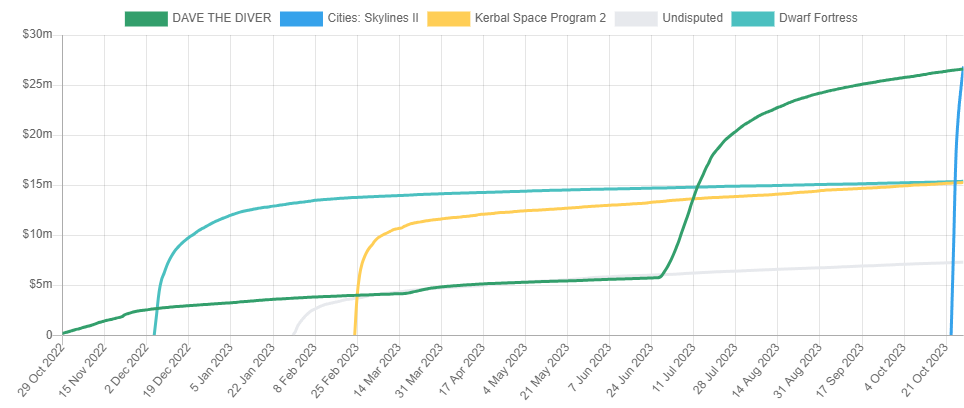
Line up all games that share Simulation and RPG as their main genre released in the last five years and DtD can be found at number six in the revenue top-10:

In short, DtD’s commercial success is definitely one to applaud for an estimated <$10M development budget. Today, we’ll dive deeper than Dave himself into the company that created him, how it pulled off this success story, whether it can replicate it, and what the industry can learn from this.
Why Nexon Created MintRocket
Nexon, founded in 1994, is huge. Just to give an idea: its hit game, MapleStory, was not dethroned by the launch of Diablo 4 in South Korea, and it distributes EA’s FIFA (now FC) franchise in the Land of the Morning Calm.
Headquartered in Tokyo, Nexon reported a revenue of 353.7B Yen ($2.37B) in 2022 from its diverse portfolio of games which includes MapleStory, Dungeon Fighter Online, and FIFA Online 4. In 2020, the company announced plans to invest $1.5B in global entertainment companies, which incidentally is the same amount as the revenue the company made during the first half of this year, which sets the stage for 2023 to be Nexon’s most lucrative year ever.

Until today though, the world hasn’t seen much proof that the company’s 2020 promise will become reality. The 2019 acquisition of the Swedish Embark Studios is still Nexon’s most recent buyout to date. As a “global player in virtual worlds”, Nexon is regarded as one of the market leaders in the MMORPG genre, but like other companies in that list, doesn’t always shine particularly bright in terms of public opinion.
Nexon’s Reconciliation
At a glance, it might seem surprising that a company like Nexon is behind the development of a cute “indie-style” game like DtD. But when taking a closer look, this might not be the strangest move...

Nexon has suffered several backlashes over the years, which have damaged its reputation among certain gamer communities. While we shouldn't forget that Nexon has still managed to nurture and grow multiple beloved evergreen IPs (20-year old MapleStory just grew 46% YoY, and it's bigger than ever), sometimes the vocal minorities can have outsized impact. To name a few odd moments:
- In 2016, the firm’s founder was investigated due to suspicions of “influence-peddling”.
- In 2019, the mobile MMORPG Durango game was shut down, less than two years after its release due to negative feedback from users. In a 2022 press conference, soon-to-be CEO Lee Jung-hun said “The year 2019 was pivotal for Nexon. We’ve been trying to make changes ever since. And going forward, we will gradually try to show how different we’ve become.”
- An ugly controversy about allegations of changed drop rates from elite monsters in MapleStory sparked the “zero won challenge” boycott campaign amongst many of its players. Nexon promised improvements.
- Nexon sued developer IronMace for copyright infringement with regards to IronMace’s title Dark & Darker allegedly having stolen assets from Nexon’s canceled game “P3”. The game was taken down earlier this year. See this video for an in-depth comparison, or this reddit post for Nexon’s perspective on the matter.
- With the rise of F2P games, players report that the company has increasingly been skewing towards “making games that are pay-to-win and littered with money sinks”.
On top of that, Nexon’s recent financial performance on PC has been practically stagnant, though strong and significant. While PC revenue continues to be bolstered by strong catalog titles, there are some inherent risks:
- MapleStory (2003), Dungeon & Fighter (2005), and Mabinogi (2004) are all stable, but very old IPs.
- EA Sports FC Online’s contribution to the business has a huge dependency on EA itself.
Yes, Nexon should be commended on being able to create, grow and sustain multiple evergreen IPs, but at the same time the pressure to prove new IP success on PC is likely high internally. Even though Nexon has something to show for here with Wars of Prasia (2023), there is definitely room to do more and do it faster.

For both reasons above, the establishment of MintRocket, a creative sub-brand, seems like a logical move compared to simply creating a new internal team within Nexon. Not only would this “new creative division” promote a highly innovative environment for people inside and outside Nexon to join, but also the brand is one-step removed from Nexon’s core identity, which is still working its way back into players’ good books.
Further, MintRocket likely operates as a startup within a big company and has its own set of values, culture, and operational methods. That means it’s not beholden to Nexon’s bureaucracy, enabling creativity due to increased decision-making speed. Finally, MintRocket is likely shielded from the quarterly, target-focused operational realities of being a public company while also being well-funded. This would further allow innovation to flourish due to a healthy serving of creativity’s most important ingredient: time.
When asked if and how Nexon supplies manpower, MintRocket VP Kim Dae-hwon states: “Nexon has many talented people with that kind of DNA [being ambitious towards new challenges]. I wanted to create a system to support such people at the company level. I dream of collaborating with and developing with capable external developers.”
Furthermore, there are a few more key reasons why Nexon would pursue this endeavor using a more stand-alone entity like MintRocket:
- Building new IP that could potentially resonate globally
- Uncovering new gameplay concepts that have the potential to be grown into new branches of commerce, either through business model changes (for example, premium to F2P) or franchise-style expansion
- Experimenting with bleeding-edge technology and ideas, the fruits of which can be taken back to Nexon to be applied at a larger scale
Interestingly enough, many of the above points also coincide with Nexon’s fourth strategic focus pillar – “Invest in new IP and technology”.
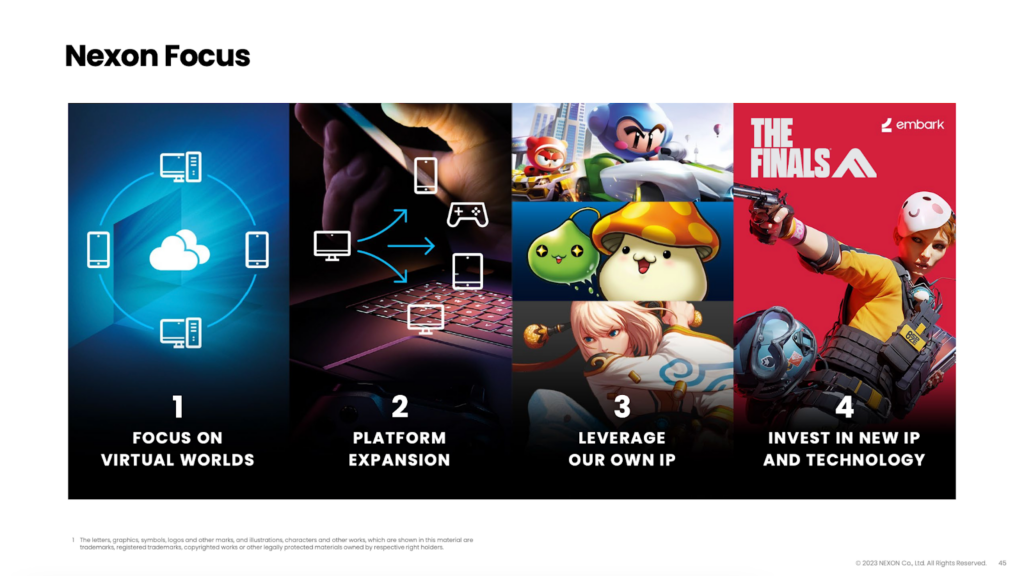
MintRocket’s Mentality and Mission
When looking at MintRocket's website, it immediately becomes clear the developers have been tasked to “focus purely on the fun”.

If this “fun first” strategy was part of an indie studio’s pitch deck to investors, it would likely be a red flag – it sounds like the most generic game development mission in the world. It’s like saying “Our restaurant really focuses on the taste of the food.” But, the company’s brand introduction reveals some more details, like a bottom-up design process and independent teams. The gist of MintRocket’s purpose is exploration and innovation without the struggle and pressure of funding a normal indie studio has.
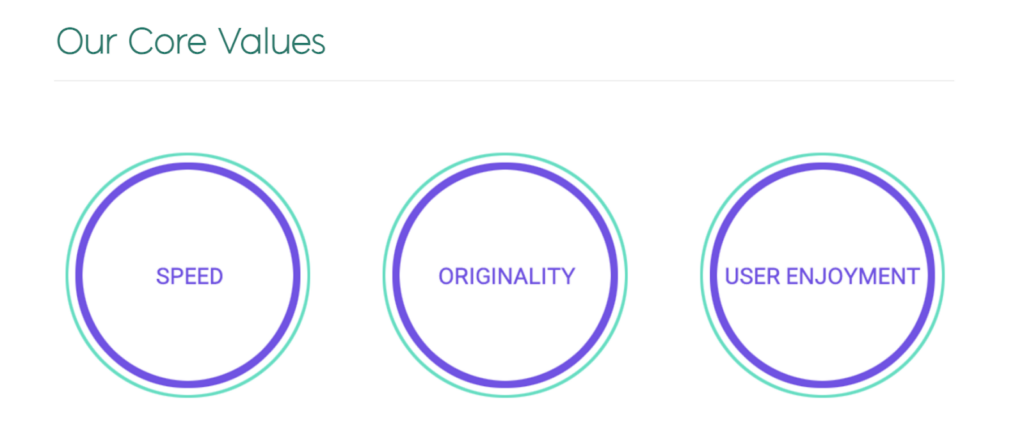
Indiegame.com paraphrases the mission as follows: “The goal of MintRocket is to aim for a different game quality with a novel perspective, and based on this, it is planning to introduce a game of a genre that has not been attempted before and a new IP” – which explains DtD’s rather exotic amalgamation of gameplay mechanics.
The thing is, when reading the company’s mission after playing its underwater fish-hunting game, one can actually see the effort MintRocket has been putting into this (trivial-sounding) mission. With DtD, MintRocket has delivered a game that touches the heart of what fun is, and therefore kept its promise.
MintRocket as an R&D Unit
On MintRocket’s website, a prominent item in the top menu leads to a page titled MintRocket Lab. Here, visitors find an impressive video that shows off the studio’s technical prowess, with visuals that don’t resemble DtD in the slightest. This part of the website is branded ‘R&D’, and even though this is currently limited to Visual R&D, it does not mean the studio’s R&D ambitions end there. And where will all this R&D be utilized? The mothership of course, and not in MintRocket’s games.
MintRocket as a Game Studio
Outside the Lab, DtD is not the only game MintRocket has been working on; Project TB is the second game featured on the studio’s website, a “Unique Team Battle Action Game on post-apocalyptic Earth” with gameplay akin to battle-arena games like Pokémon Unite and Arena of Valor. The website also mentions Project NAKWON, an ambitious-looking zombie-apocalypse PvPvE stealth/survival game, set in Seoul.
Looking at these wildly varying projects, one could be skeptical about the studio’s ambitions and the expertise that is required to make top-quality games in such diverse genres. Optimists would argue that if MintRocket’s development and recruitment strategy holds up, the studio could find success in any genre.
So in this essay, we’ll try to answer the following question: Is MintRocket's fun-first strategy engineerable, and what can the industry learn from it? We’ll attempt to answer this by taking a more thorough look at DtD’s use-case.
Indiecredible Marketability!
It’s not widely known that DtD isn’t an indie game, and Nexon and MintRocket have not taken the effort to rectify this publicly. Since the release of the popular and dramatic Indie Game: The Movie, extensive research has been conducted into the definition of indie games and how they are designed. Safe to say, even though MintRocket might be autonomous when it comes to the games it designs, general consensus still won’t qualify the studio as being indie, due to its public status as a Nexon subsidiary.
While for experienced game developers, it should be pretty clear when looking at the game’s level of polish and rich feature set that it couldn’t have been made by a handful of developers. Even the most prominent game journalists fell for the game's indie-esque nature left, right and center. This shows once again that research into a game should be more than simply checking its Steam page after playing it.
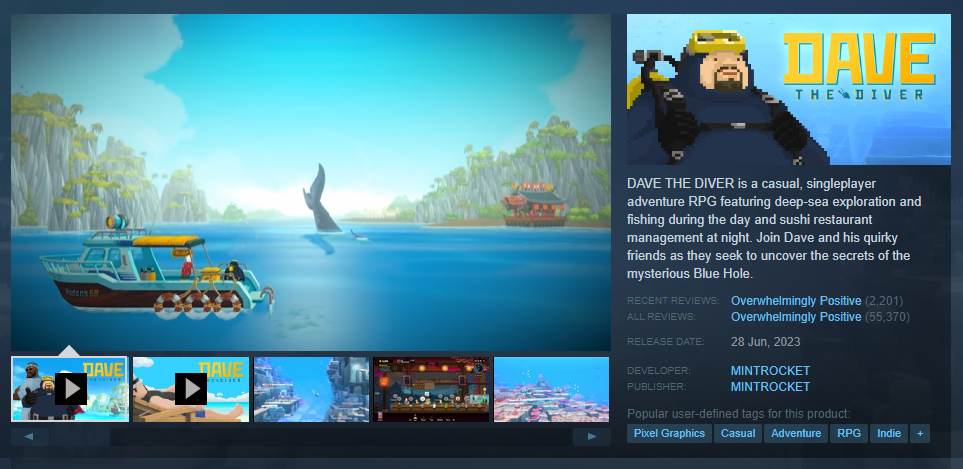
The Golden Joysticks Awards also nominated DtD in the “Best Indie Title” category last month. It didn’t win – Sea of Stars did – but DtD shouldn’t have been nominated in the first place. And finally, there is The Game Awards, which also has DtD nominated in their indie category. Sigh.
So the logical question arises: how many players will actually make a purchase of a game depending on the “Indie” label? Unfortunately, not a lot of research has been done on this, but it’s not the first time that Steam tags are being misused or misconfigured.
While it’s definitely unfair to compete against other, actual indie games for awards while being part of Korea’s biggest game company, it is not unfair to build a game with a classic indie aesthetic to boost its marketability. While the internet attempts to solve this ethical dilemma, we’ll be having a closer look at MintRocket’s other go-to-market strategies.
A Global Audience Focus
With MintRocket, Nexon looks like it’s trying to expand out of Korea through the exploration of new genre-mixes and the development of games with a more Western aesthetic. Nonetheless, 68% of DtD players are from Asia, but this is a first step in the right direction from Nexon’s existing portfolio audience being >85% from Asia.

The result of these ambitions is confirmed by Nexon’s Q3 revenue growth, which shows an impressive 78% YoY increase in North America and Europe, which can be attributed to sales of DtD for the most part.
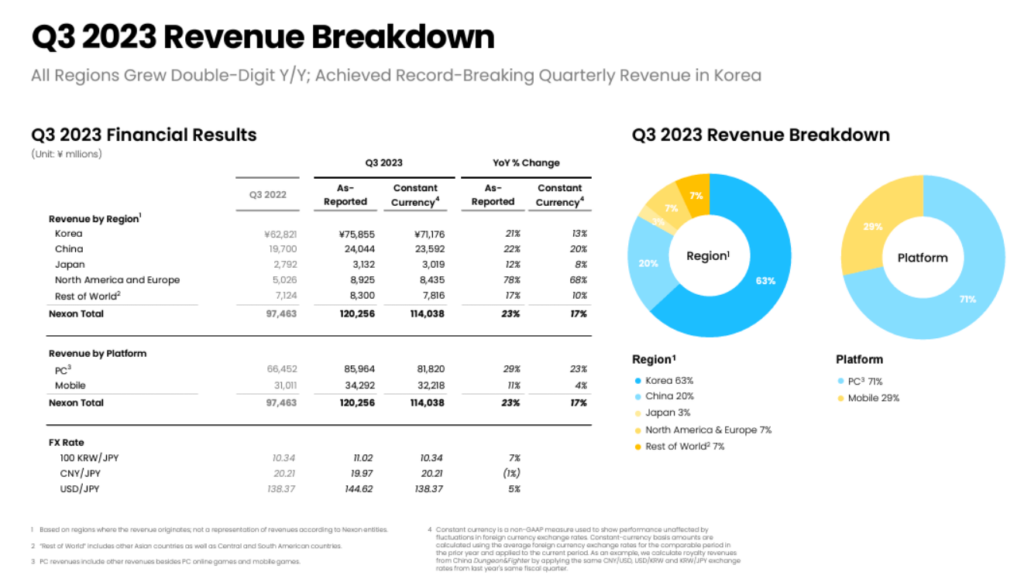
MintRocket's games are of course not the only games that Nexon is trying to pursue this global footprint expansion plan with. The Finals from Sweden-based Embark Studios is another top contender with its open beta hitting 7.5M global downloads, and retention rates beating Nexon's internal expectations.
Early Access as a Go-to-Market Strategy
DtD entered Early Access right when MintRocket was announced in October 2022, and remained there for close to eight months. While it’s not always a popular model among consumers, Early Access has some clear advantages. In short, it allows developers to release unfinished, alpha, or beta versions of games for purchase by the public, enabling public beta testing, marketing potential analysis, and the ability to engage with players and gather feedback before the game’s official release. If the Early Access version is any good, creating global launch anticipation and eventual pent up demand is the cherry on the cake.
Valve rightfully discourages developers from using Early Access on Steam solely for funding purposes, but MintRocket probably didn’t feel this statement was addressed particularly at the studio anyway. The team has clearly used the platform for the right reasons as it worked closely with the community until global launch in June 2023.
Its Early Access launch on October 27th 2022 also resulted in a sizable streaming bump, the first-sowed seed of anticipation among the game’s target audience. On global launch, DtD enjoyed quite the buzz as well, heavily outperforming games like Deep Rock Galactic with an average Twitch viewer count of 8.2K during the month it was released. In comparison, that is as much as 80% of Stardew Valley’s viewer count when its highly-anticipated cooperative play patch was released in January 2021. Peak viewers for DtD in July this year hit an impressive 66K with daily averages of 18K, totaling a massive 6M hours watched in that month alone.

Generally, it seems that Early Access was a good decision for MintRocket. First, it was able to generate some pre-launch hype that contributed to its more than $26M gross revenue to date. The game is a success – its development budget was reportedly far less than $15M, with MintRocket’s team size of ~30 employees.

Second, Early Access allowed MintRocket to receive and address valuable feedback from DtD’s initial cohort of dedicated players. Especially since the game contains a good amount of mini-games and unpredictable events that could take people out of their flow, it was important to streamline the game with the first cohorts of players, as was confirmed by director Jaeho Hwang.
Finally, its Early Access success can also be validated when looking at the sales of ‘Version 1.0’ of the game, versus the sales made during the first three months of Early Access. For DtD this looks like this:

This factor of 5.57x puts DtD approximately in the top ~7% of all games released on Steam Early Access.
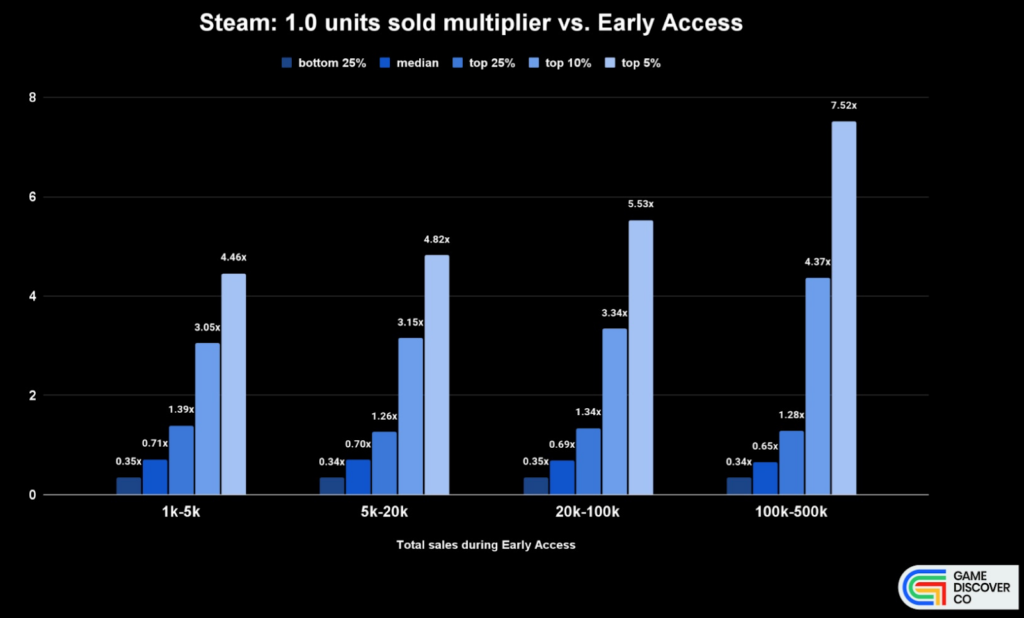
For more details on GTM strategies for PC games, check our recent podcast with Gamesight. With the business talk out of the way, let’s now jump into the game’s design.
General Game Structure
The multifacetedness of DtD immediately becomes visible when looking at its core gameplay. Without a doubt, the biggest portion of game time is — unsurprisingly — spent diving. During these sequences, the player swims around to gather fish and other resources while managing oxygen levels and inventory.

Dives can technically be short, but the majority of players will spend an average of at least 15 minutes for a substantial dive. We’ll cover the game’s pacing in more detail later on, but for now it’s important to note that the diving is the game’s grind-mechanic. While exploring and scavenging, players descend deeper and deeper into the game’s main environment, the Blue Hole, which looks slightly different each time the player visits. By doing so, DtD borrows level design magic from fully procedurally-built games like roguelikes and survival games, while keeping notable spots like underground caves at consistent locations. This allows the designers to require players to revisit some of these spots a few times.
Traditional game development would have simply stopped here, adding a round-up screen where the player receives money and a ledger with sales results of the fish caught during dives, to not overload the game with secondary gameplay sequences. But MintRocket decided to take a more unconventional route by adding another gameplay mechanic to DtD’s loop instead, to really bring substance to the game’s ultimate driver and player fantasy: running a restaurant. Where have we heard that before?

The restaurant gameplay revolves around more proven and familiar gameplay that dates back to games like Fast Food Tycoon (2000) and others. Before starting to serve dishes of sushi however, players are tasked to assemble today’s menu with dishes made up of fish caught during the diving sessions. Using the metaphor of a day and night cycle, the game elegantly connects both mechanics by sending the player back to the restaurant after two diving sessions during the day, for a 1.5-minute round of waitering at night. This offers a natural culmination and closing of the day, as the monetary rewards of the diving sessions have been reaped. The earnings can then be used to purchase better gear, which allows Dave to dive deeper, catch stronger fish and carry more supplies back up.

After a good portion of the story missions, the game extends these mechanics by introducing features like hiring staff which assist the player with serving customers in the restaurant, the Fish Farm where players can breed fish they have caught using their eggs and the Farm, where crops can be grown to be used as vegetables for recipes in the restaurant.
MintRocket’s Playbook of Fun
DtD very closely touches on the ‘cornerstones of fun’. The game design classic A Theory of Fun by Raph Koster defines several building blocks of fun, which we’ll use to map out some of DtD’s features. We can’t cover each feature in-depth, but this excellent feature deconstruction presents a thorough, additional analysis.
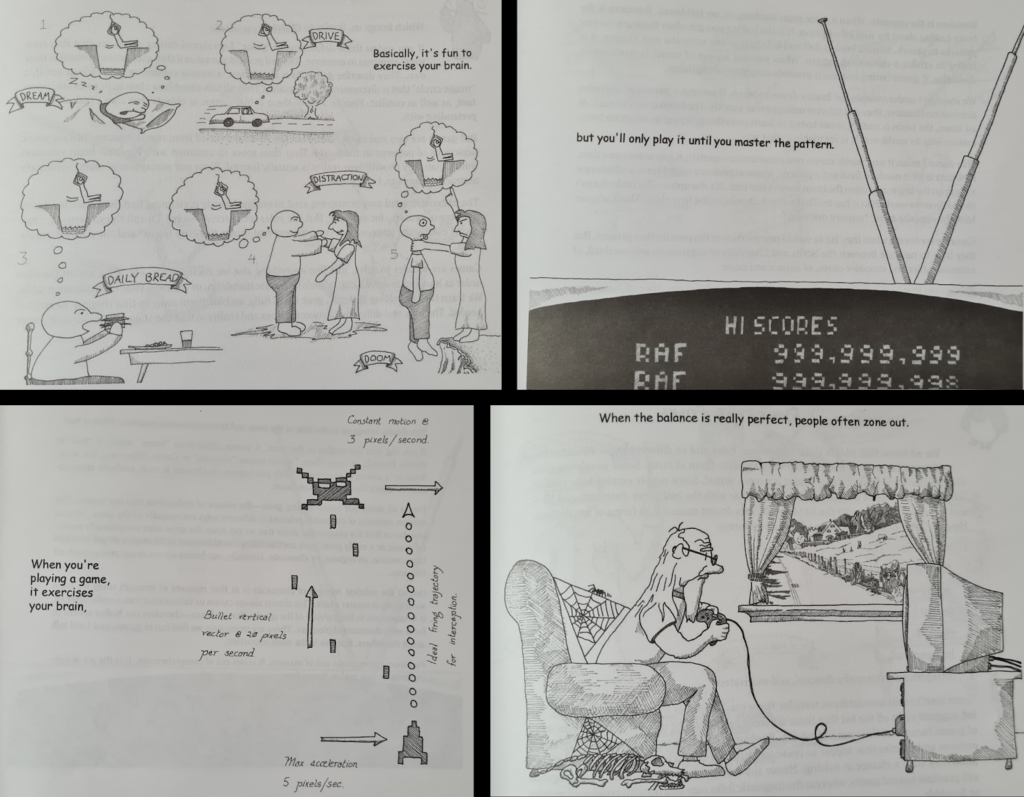
#1: Fun as Learning
Koster argues that fun is essentially the process of learning and mastering new patterns. Games provide a structured way for players to learn and improve their skills.
As an example, fish in the earlier, more shallow parts of the sea are easier to catch. With the starter harpoon, fish that roam in the deeper areas will simply break free. It is never explained to the player why, which makes them wonder what they can do to catch these fish. The game then slowly starts offering solutions:
- Upgrade the harpoon so that it can handle more advanced fish better
- Use a gun that shoots tranquilizer darts to make the fish fall asleep, so they can be picked up undamaged
- Use a net gun to trap the fish and catch them alive and undamaged
But in turn, these solutions will only work on smaller fish. Catching bigger ones without killing them requires different methods the player has to find out later again. MintRocket has done a perfect job of introducing these new possibilities throughout the game. Even after playing for 15 hours, the player will still be wondering how they can tackle some of these challenges.
Systems to invest in / Progression metrics
DtD often introduces new side-systems without overcomplicating its elegant core loop of fishing and serving food. DtD’s metaphor to collect all these systems in a handy overview is visualized excellently as a smartphone – everyone already knows how these work, which removes a big part of the learning to navigate game menus.

On receiving the phone at the beginning of the game, many of its features are still locked, which shows that there’s much more content to engage with. This foreshadows the richness of the game without overloading the player. As an overview, the phone contains the following apps; the ones marked green house a secondary progression in some shape or form:
- Weapon Shop: Permanently acquire and upgrade the several guns that are available
- iDiver: Upgrade basic gear like the Harpoon Gun, Diving Suit, Air Tank and Cargo Box, allowing for more effective dives
- Cooksta: After serving food each night, Dave earns likes, which unlocks more features for the restaurant
- To-Do: An overview of all main, side, and VIP missions
- Call: Can be used to reach every character that was encountered before and ask them something
- Mail: Informs about special events, sometimes also shows other funny messages
- FarmNow: See the state of the Farm without having to visit
- Calendar: An overview of upcoming events for each day
- Management: Records the history of each night’s earnings in the restaurant
- Marinca: The game’s collection feature; shows the highest quality of every fish that was caught
- Weather: Shows the weather report for the current and next days
- Music: Can be used to replay all different background music
- Minigames: Here, players can replay three different minigames, once unlocked
- A basic calculator
- Album: Shows every photo taken at specific picturesque spots underwater
- Ecowatcher: Side-progression with additional collection missions, earning charms that grant buffs
- FishMon: Tracks very exotic, one-of-a-kind fish that occasionally appear and are difficult to catch
- Tips: The game’s help section. Can be used to review tutorial screens
- Game Settings
As a form of visual reward for progressing through the story or engaging with one of these secondary progressions, the game features around 20 minutes of pixel-art style animations. Additionally there are very short, repeating clips that happen the first time each new day when increasing, for example, the player’s Cooksta rating, preparing a new dish, crafting a weapon, serving a VIP, researching new dishes or enhancing them. The ones with weeby weapon mechanic Duff are especially hilarious when encountered.

#2: Patterns and Predictability
Koster also claims that fun arises from the recognition of patterns and the ability to predict what will happen next. Games present players with challenges and problems to solve, involving recognizing and mastering patterns.
The game’s director confirmed DtD only started to be fun after the day and night cycle was added. On one hand, this introduces a rhythmic cadence with understandable phases that start and end while imposing the two main gameplay mechanics of fishing and serving food. On the other hand, the use of the time metaphor — which is strengthened by the time-limited nature of the restaurant gameplay — could be a little risky, as it isn’t immediately clear that time is not passing until a dive is completed. This way, min-maxing players will feel time pressure that isn’t really there, and might fear losing a diving window even though this has zero implications.
Pacing & Engagement Loops
Many members of the MintRocket team have a mobile game development history at the company, specifically operating survival MMO Durango, which was discontinued in 2019. The game’s director, Jaeho Hwang, confirms having made choices at the design level in DtD using a mobile lens at the 14 minute mark of the video. The game visibly takes inspiration from mobile game cadences and engagement loops, which can be confirmed when looking at the time dives take as the game progresses.

Especially at the beginning, when the player is still being on-boarded, dives are kept very short, to be able to show players what’s in store in other parts of the game, especially the restaurant. Additionally, it sets the stage by making players more curious about the deeper parts of the sea they cannot reach yet.
During dives, players can freely set their own goals. They can decide how deep and long they want to dive and the gameplay does not punish players for jumping in quickly in case they only require a few specific resources for the task at hand. This allows for shorter sessions too, which lowers the threshold to boot up the game and jump back in. The importance of this cannot be underestimated in a society where increasingly shorter parts of our days are planned and switching tasks takes increasing amounts of energy.
Variation and Surprise
With this section, we’ve reached the most important aspect of the game’s success: as practically all games offer patterns and predictable systems, the ability to break free from these and surprise the player has the ability to create the highest level of engagement.
DtD offers so many unscheduled, unique happenings on the micro- and macro level, that it’s very difficult to put this game down, as curiosity for next challenges (and how to tackle them) is ever present.
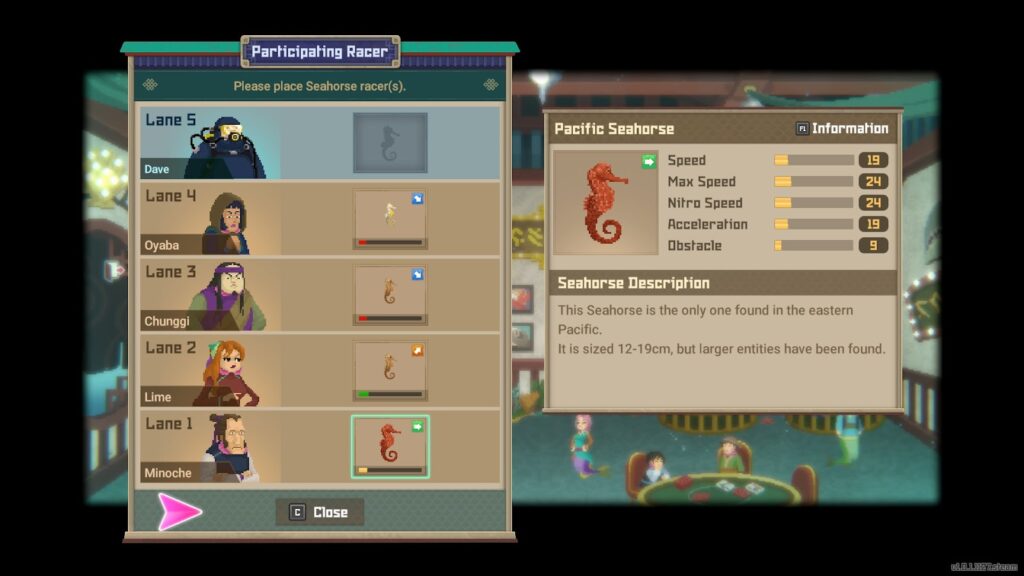
One example at the micro level is that the underwater environment is subject to subtle changes depending on the weather at the surface, as different fish show up when it’s raining, for example. Making limited, small changes like these allowed the relatively small team to add variation to the game world by creating a “closed but changing environment”.
On the macro level, DtD unlocks numerous gameplay sequences — like full-fledged stealth missions — which contain entirely new mechanics. Normally, developers showcase these early on for maximum exposure, but MintRocket again chose differently and added a plethora of these deep into the game. And then there are mechanics in the several mini-games that are so far away from the game’s core that some of them even had to be introduced in one of the side character’s dreams!

Time-limited Events
Then, there are features that feel pretty similar to the well-known time-limited events in free to play games. The game occasionally introduces VIP customers and special nights where specific dishes are extra lucrative to the restaurant. The big difference is that mobile-F2P games utilize real time, which means players have to schedule coming back to attend and finish events. In DtD — like in any premium game — time stands still when not playing, but this does not mean the feeling of engagement is lost.

Additionally, these events introduce a strategic choice where players might not want to upgrade their recipes like they usually would: by investing multiples of the required ingredients into the recipe so that every sale brings in more money and Cooksta reputation. The reason is that this reduces the amount of dishes — and therefore sales — that can be made with these ingredients.
#3: Cognitive Engagement
Thirdly, Raph Koster states that fun in games comes from cognitive engagement and the satisfaction of overcoming challenges. Players enjoy the mental effort and reward of understanding and mastering the game's mechanics.
Several design choices in DtD were clearly made to streamline the player’s cognitive engagement. First and foremost, it’s interesting to recognize that the game’s loss condition is restricted solely to Dave’s oxygen level. A logical and common pitfall would have been to add Hit Points as a separate parameter to Dave’s character. When running out of oxygen, Dave’s HP would then be the next and last bar that is depleted (like when diving in Sea of Thieves, for example). Instead, knocking a few percent off Dave’s oxygen bar when being hit by aggressive fish works perfectly fine, and it allows players to only worry about one single parameter. It’s an excellent decision that shows the aptitude of the game’s designers.
Many Goals
The most elegantly designed games offer several challenges to the player, many of which should ideally have different time frames. As we know, a balanced mix between short-term, mid-term and long-term goals is prudent for player engagement. DtD presents numerous different goals to the player, all in varying cadences, for example:
Short-term goals: Finding an oxygen pod to prolong Dave’s time in the water, searching for a better hook so more advanced fish can be caught, and searching for utility items like underwater scooters or portable oxygen flasks.
Mid-term goals: Gathering specific fish or items for VIPs or other missions, taking care of crops at the Farm and taking photos of specific marine life.
Long-term goals: Earning enough money to upgrade Dave’s gear, reach deeper areas, learn about the existence of the Sea People and completing the Marinca collection.
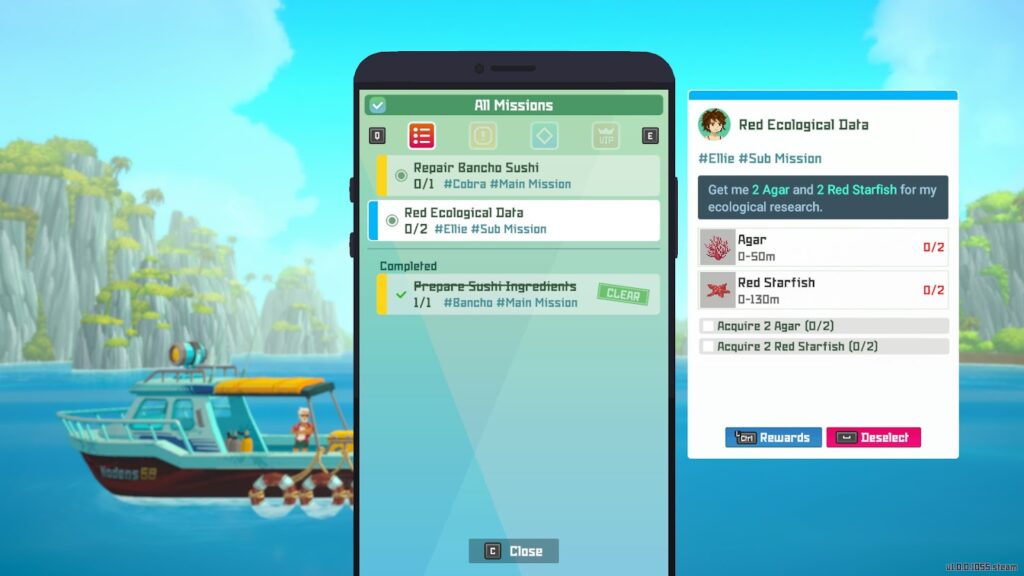
A Lucrative Venture
As can be seen in the loop diagram above, the main progression currency in DtD is money earned. Throughout the game, more secondary ways of making money open up on top of the main way to secure earnings: restaurant sales. Players will come across new ways of supplementing their income by, for example:
- Finding Silver Cups, Gold, Pearls and more to sell at Cobra’s shop
- Mining underwater ore and selling it
- Selling fish from the Fish Farm
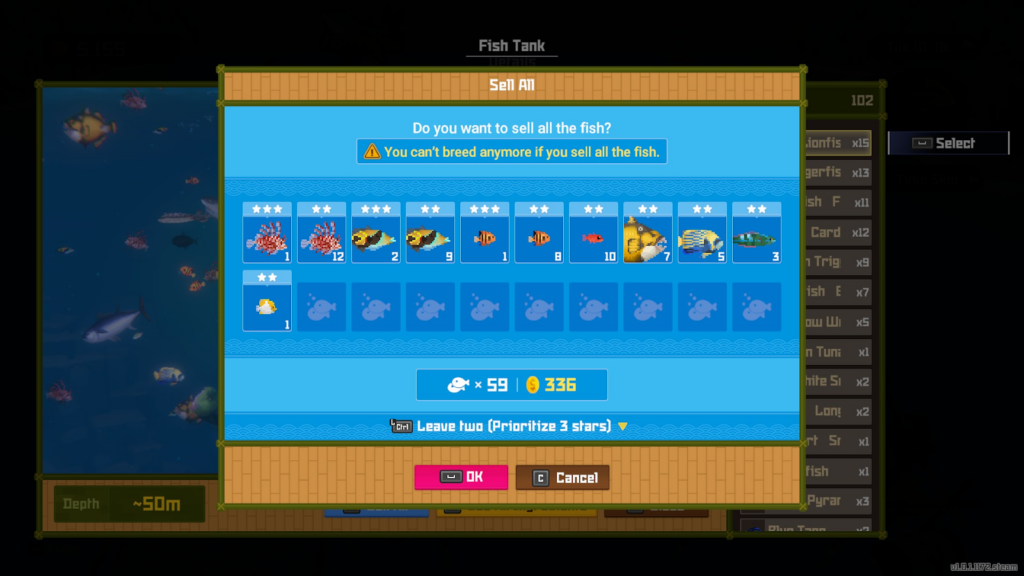
By creating and introducing multiple ways to achieve a goal, players are given the agency and freedom to explore what’s best for their current situation, increasing cognitive engagement.
#4: Immersion and Flow
Lastly, fun involves a state of immersion and flow, where players are fully engaged in the game and lose track of time. Achieving a balance between challenge and skill is essential to create this state. Creating logical scenarios and providing clear feedback is crucial.
First of all, DtD’s immersive qualities compare to that feeling of free-roaming exploration also seen in games like The Legend of Zelda: Breath of the Wild, where players set a goal for themselves only to find themselves straying from it as they run into some other, curious incident they haven’t encountered before.
While diving, priorities often shift in similar fashion; this generates that layered to-do list in a player’s mind as they will have to return and complete the originally planned actions, potentially during a next dive. This feeling of exploration has purposely been strengthened by the lack of a map when diving underwater.
Exciting, yet Forgiving
Once every few dives, players will progress the story to the point where a boss fight occurs. These always happen as underwater combat sequences, where the player is able to fire their weapon while dodging attacks or projectiles. Here, the game teaches an important lesson that game systems don’t have to be rigid. When players run out of oxygen while diving, their dive will basically have been for nothing, as they lose all but one item they have found. But if this happens during these boss fights (by being hit too often), they are simply allowed to retry the encounter until they finish it.

It’s not consistent, but it is forgiving. Losing everything you have just because the game progression decides to throw a boss fight at you having scrounged fish for half an hour is not worth the adjustment that needed to be made to the Game Over scenario.
When diving, the game contains a clear hard loss condition, but in the restaurant the player isn’t able to miss in a similar way. There is, however, an interesting negative scenario possible in the shape of not being able to sell out the entire menu. Before the restaurant gameplay starts, the player has to compile the menu and determine how many of each dish they will prepare to be served. If they prepare too little, they lose income, but if they prepare too much, the ingredients used will be lost. Once something has been added to the menu, it’s considered prepared. Even when changing your mind and discarding something from the menu before opening the restaurant results in wasted ingredients.
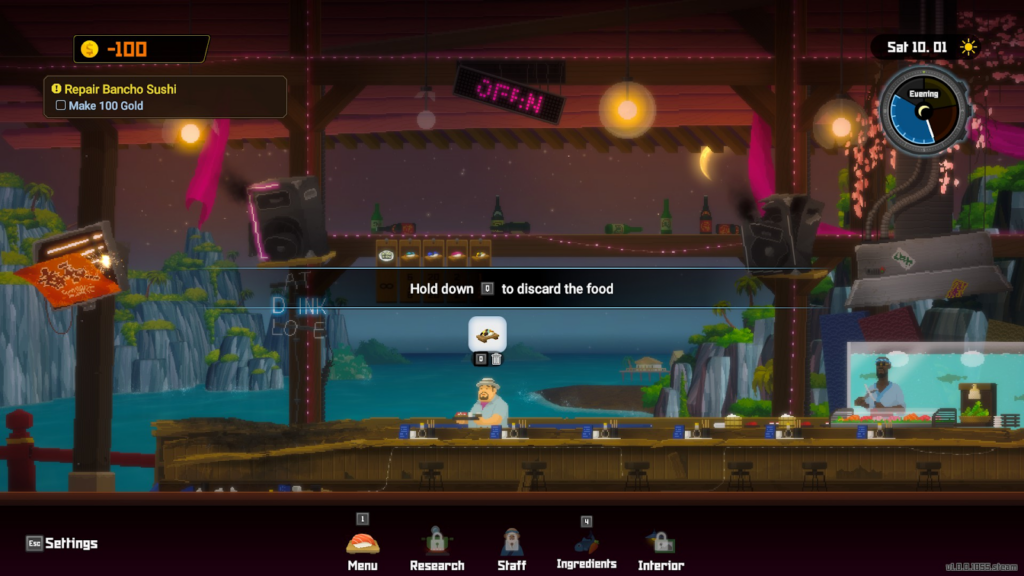
Overserving is not the most thoroughly explained mechanic in the game, which can result in players only learning later on that the rest of the food on the menu gets discarded. Upon realizing this, even though it technically is not a big deal, it can still feel like a misstep.
Logical and Appropriate Missions
Well-designed games provide clear feedback mechanisms, ensuring that players understand the consequences of their actions and are able to learn from their experiences. The concept of patterns and mastery is central here, as players engage in the learning process, gradually mastering the mechanics of the game. In DtD, this manifests itself when diving and making food, but one of the most beautifully designed parts of the game is the Sea People Village. After finally finding it — which takes at least a few hours of gameplay — players are exposed to a whole town full of NPCs that start sending Dave on missions, as is common in RPGs.
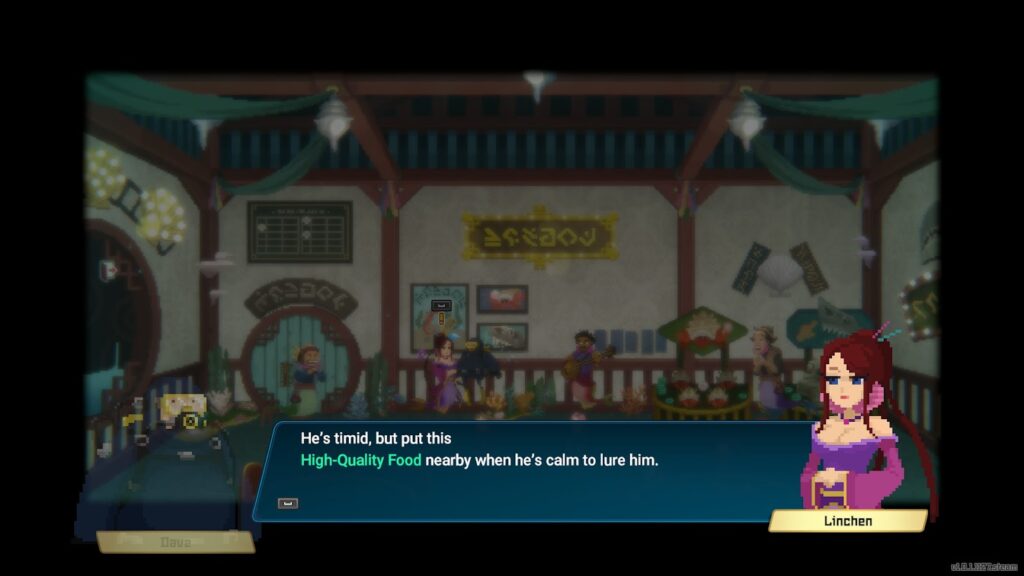
What’s really important is that the missions fit into the game world very well. For example: to unlock seahorse riding, the player needs to first unlock the net to be able to find and catch four escaped seahorses all around the village. This way, players are able to logically explain the thematic choices the missions offer, which greatly boosts immersion.
This can also be seen with the VIP customers that occasionally visit the restaurant. Being able to serve them the dish they want at the time they say they will come back unlocks small mechanics, like being able to serve customers beer instead of just tea. The addition of tangible yet tiny extra mechanics as rewards from side missions keeps leveling up the player’s experience.
Another example of this is how specific parts of the main story are foreshadowed. The mysterious Sea People’s village, and in turn the glacial biome that it's supposed to house, are mentioned and shown to the player several times before they find it and earn access, creating a clear desire to pursue their discoveries.
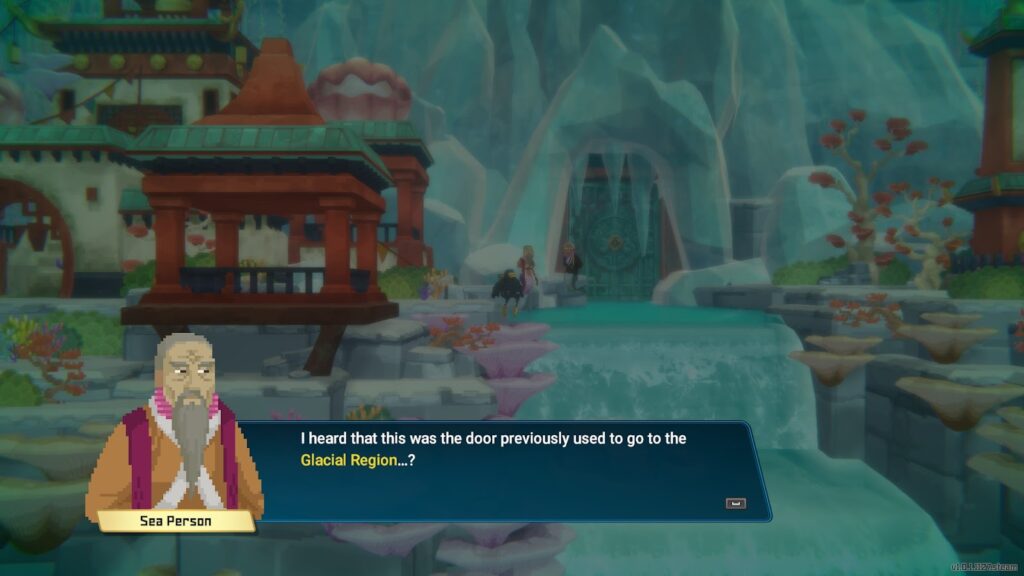
Narrative
The game’s storyline is built up in a smart way, starting out with the fantasy of maintaining and developing a restaurant, a common theme in mobile puzzle game metas. Then, the initial hook is quickly revealed in the shape of an enigmatic legend: Dave hears about the Sea People, with mentions of a mysterious ‘incident’. Certain missions the player gets refer to finding an artifact that can be found in a place where it was stored “like it was kept somewhere”
Even though DtD is structured in narrative chapters that are finished by completing main quests, the game usually changes pace at the end of a chapter by breaking out of the usual pattern. This can, for example, lead to not having to serve food one specific evening (like at the end of chapter 1) but engaging in a private party where the player learns the backstory of the four main characters. This can lead to some panic amongst the more strategic groups of players, but the game usually reschedules events properly so the daily patterns don’t get messed up.
The game’s narrative also flirts with the ethical question that involves catching tons of fish to be used as dinner. The game turns the situation around by staging an encounter with the Deep Blue organization, a corrupt environmental group that acts violently against fishermen like Dave (who innocently points at “big, evil fishing corporations” in an attempt to shift the blame) but clumsily keep harming the environment themselves in every attempt to stop them.
Generally, DtD offers well-crafted, witty dialogue throughout the game, whether it be a hungover NPC that pukes in the water just before Dave has to dive, or a famous movie director called Michael Bang that requires a specific dish. On rare occasions, more emotional topics are covered as well.
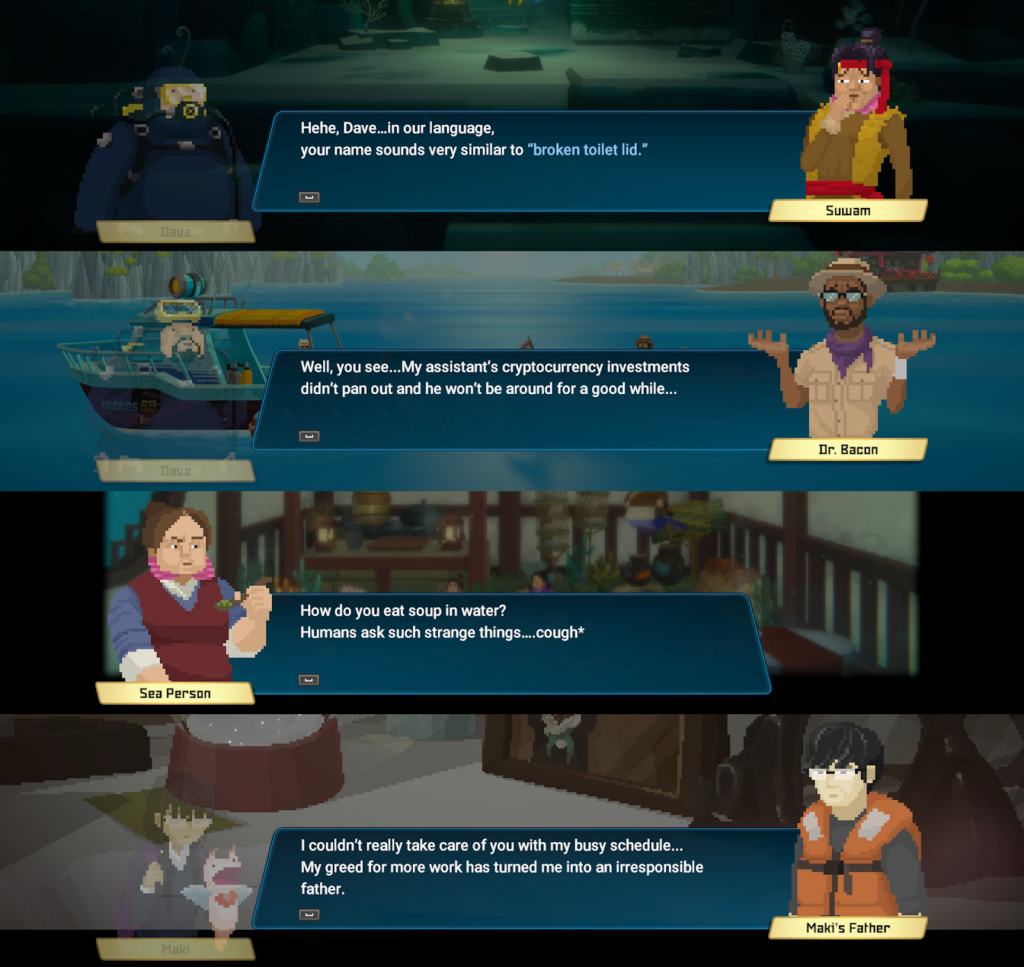
Looking Ahead
The Future of DtD and MintRocket
After having analyzed DtD, Nexon, and MintRocket, it’s safe to say that the studio has justified its existence and that chances are high for more hits from this compact Nexon subdivision.
Given the game’s success, it’s likely that Nexon will invest in further building out the DtD IP. While this can happen in a sequel, the game’s core design is also pretty conducive to a F2P business model. And who knows where DtD’s narrative-heavy IP will land from a transmedia point of view many years into the future – that will definitely be exciting to see play out.
But the first step would be to think about the next DtD product, and Nexon would be wise to move these potential products and a few key MintRocket employees to the Nexon mothership and free up MintRocket to keep innovating. In that scenario, Nexon would just need to figure out how to provide the IP an internal environment that doesn’t let it lose its roots and continue to shine bright in the players’ eyes for years to come.
In turn, MintRocket itself can potentially grow, as it provides a space for ambitious Nexon employees and talented external hires to enjoy game development less burdened by the ‘public corporation’ mentality of its holding company. Here, it’s important that growth does not mean more people per team, but more teams within the studio.
While the studio’s mission doesn’t come across as something revolutionary at first, it’s pretty obvious that with DtD, MintRocket has taken the “new kinds of enjoyment with various genres” to an extreme, and with striking results. On the other hand, neither Project TB nor Nakwon seem to have that unique, genre mish-mash angle DtD was built on. But it is still early for both of these products and their commercial success will be interesting to track.
DtD has proven to be a staple of immersive entertainment with mechanics that clearly facilitate the building blocks of enjoyment and engagement: fun as learning, patterns and predictability, cognitive engagement, and immersion and flow. By focusing on these pillars and by not being afraid to expose players to unique mechanics, which are spread evenly throughout their progression, MintRocket has proven this game plan can yield bountiful results.
But is this a clear formula? In theory: Yes, MintRocket could try replicating this success similar to the blueprint that Pixar uses to create their famous story structure. In practice, however, game development depends heavily on the theme and choice of genre to provide the necessary space for innovation, so success is never guaranteed until explored. That said, we do expect Nexon’s sub-brand to continue expanding in ways that follow the innovative fun-first design philosophy highlighted above.
Learning from Nexon’s Sub-brand Strategy
Being awed by DtD’s success, we shouldn’t forget the key ingredients that helped set it up for success:
- A lean and highly skilled team that was right for this kind of job
- A fitting organizational structure through forming the MintRocket sub-brand that incubates speed and creativity, while shielding it from typical public company bureaucracy and public market expectations
- A stable and well-funded financial relationship with the MintRocket sub-brand that allows it to operate as a startup with its own culture and operational methods, while further enabling the unit’s core values of originality, speed, and fun
While points 2 and 3 above have been previously discussed, it's worth pausing on the "lean" team aspect of point 1. This is especially important to keep in mind because Nexon's philosophy towards AAA game building is moving towards becoming fundamentally different to what one would expect. In his latest interview, CEO Owen Mahoney says: "... we think that we can bring great new triple-A IP into the world without having to have a thousand people in the development team." They're definitely proving it with MintRocket's 30-person team taking an "indie" approach, and are also proving it with The Finals, which uses AI tooling to create efficiencies across a sub-100 member team! To be fair, Apex Legends also had a ~100 person team during its early days, but it grew from there and it'll be interesting to see whether The Finals' team doesn't.
As we all know, creating new and globally successful IP is one of the hardest things in game-making. It is even harder for big publicly traded companies, which need to operate in a generally risk-free fashion in the public eye. For big companies that are looking to create new IP from nothing, there is definitely a page to be taken from Nexon’s approach.
We will likely see other big companies taking Nexon’s example to build a sub-brand like MintRocket, focusing on more blue-sky design experimentation with the purpose of creating new IP and ideally breakout successes. We'll also probably see more companies trying to replicate Nexon-like lean AA/AAA game building approaches, as there is potentially more than one path here. Here, it’s absolutely crucial to note that there are no shortcuts to be taken: unexplored roads are rocky and full of peril. For example, simply slapping a few mechanics together and branding it indie will certainly lead to failure. Today’s success story is a testament to both MintRocket and its excellent game design capabilities, and Nexon’s willingness to create an organizational structure that serves as a hotbed for innovation.
A Big Thanks to Our Partners
This essay and all of Naavik’s freely available research wouldn’t be possible without the support of our Open Gaming Research Initiative partners. Learn more about them here.
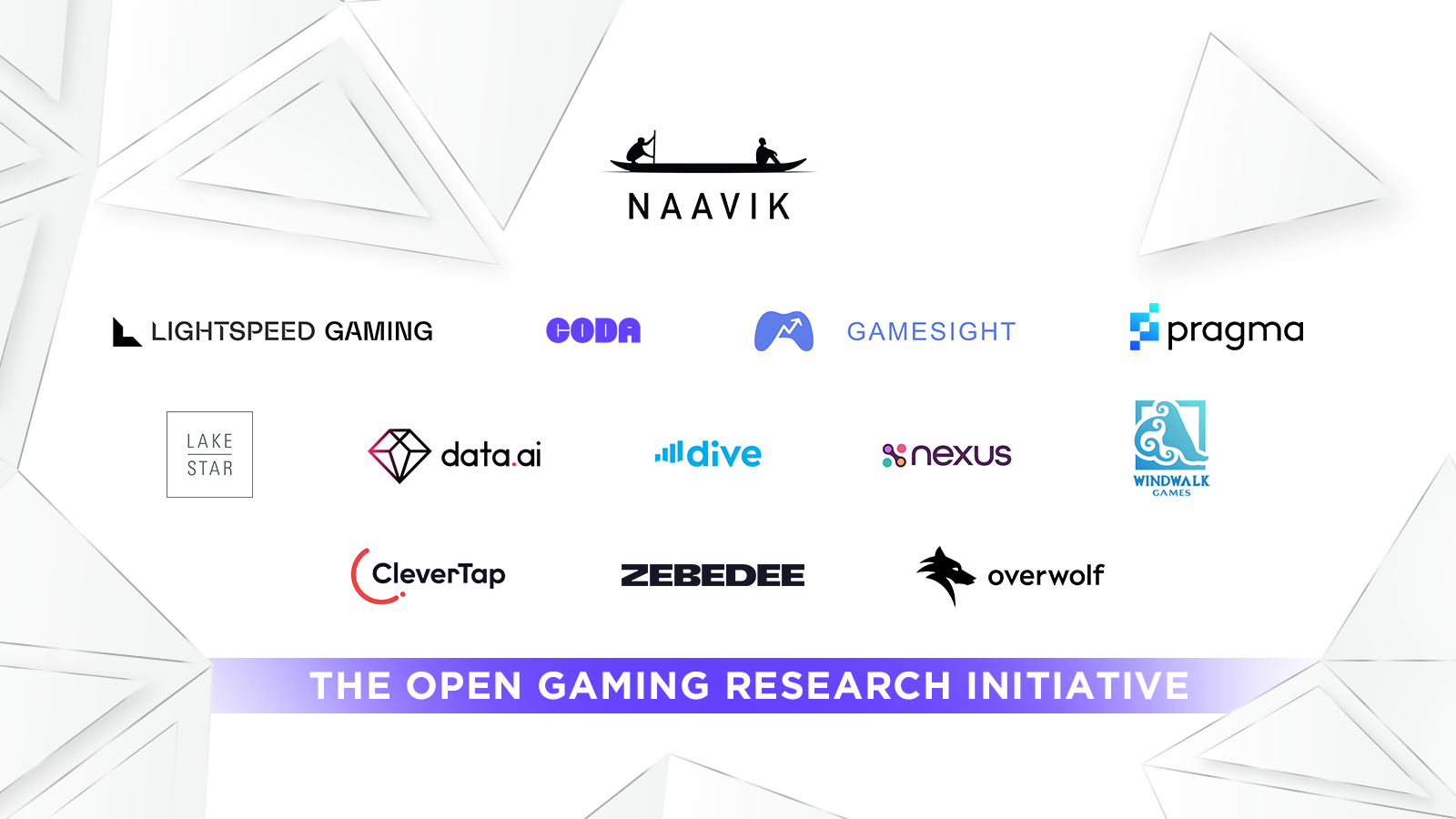
Naavik has helped 250+ games teams with game & economy design, market research, user acquisition, and more. If interested in how Naavik can help your team, make sure to learn more and get in touch.




